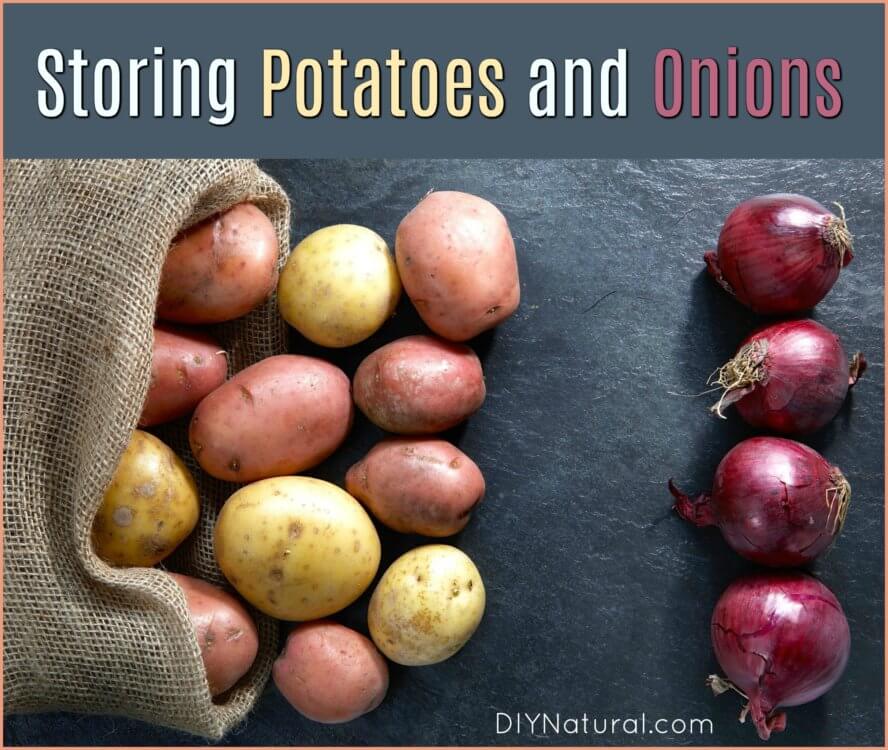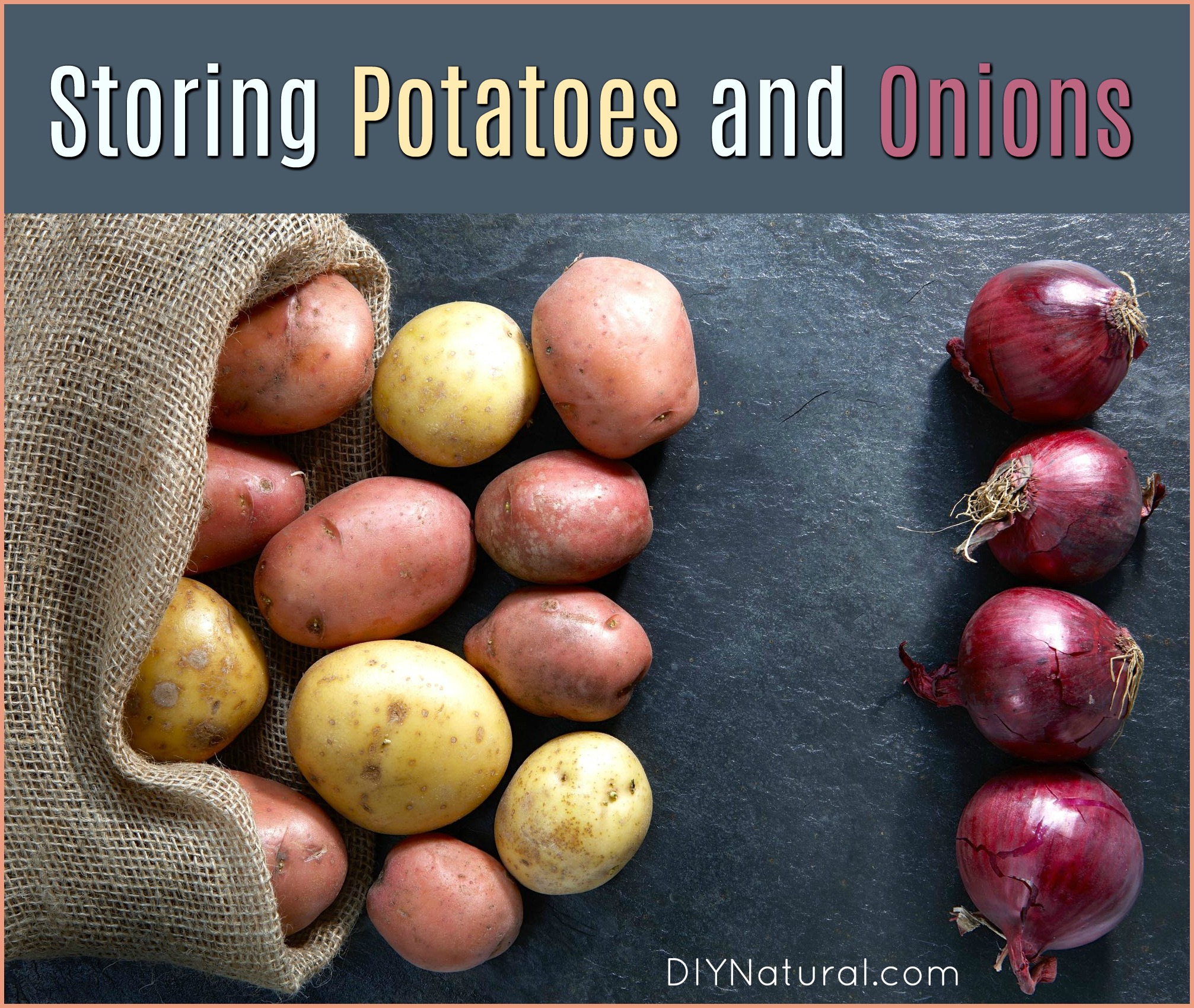
Learning how to store potatoes and how to store onions is crucial for gardeners. Before you store them you need to cure them. Let’s learn how.
As we head into fall, a lot of us are digging up what we grew this past year. For me, that’s a good amount of potatoes and onions. But they should not be stored right after you dig them – they actually need to be cured first. The process is simple.
Curing Potatoes And Onions
Onions and potatoes dug fresh from the ground can be used right away. But if you want to keep them, they need to be cured.
Curing involves hardening up the outer skin to protect the softer flesh inside. Done correctly, curing can help produce last for months. If not cured, rot or mold could set in.
How to Store Potatoes: Cure and Store
First, inspect the potatoes and look for bruises, bad spots, dings from the shovel or pitchfork, or anything that may cause rot later on. Then lay them on a couple of newspaper pieces in a shady spot for a week or two. Don’t wash them off first. They will bruise easily with the thin skins. Leave them for a few weeks and then store them in a cool place with some humidity.
If they are kept totally dry, they will shrivel up. If they have too much humidity, they may develop rot. Around 70-80% humidity is ideal. Kept like this, potatoes will store well all winter.
How to Store Onions: Cure and Store
For onions, curing is done much the same way. Dig the onions and lay them on the ground if no rain is expected. Leave them in the sun for a few days – enough time for the outer skins to become papery. If you expect rain or frost, lay the onions on some newspaper in a protected spot for a few days to a week. Finally, when the skins are cured, they can be moved to a bin in a cool spot around 45°F. These onions will keep for two to four weeks, possibly longer.
Storing Cured Vegetables
How to Store Onions and Garlic Braids
You can also braid the tops of onions and garlic to keep them longer. Taking the green tops of a few onions, separate them into three bundles. Leave them attached to the bulb. Braid the greens from the bottom first. When it starts to thin out, add another onion or garlic to the braid. Keep braiding until you have no produce left. Tie off with a piece of twine and hang in a dry spot. These should keep most of the winter.
How to Store Potatoes and Onions in Nylons
When I was young, we would take onions and potatoes and slip them into a nylon stocking, knotting the sock in between each piece. While it’s true that it did keep them separated and dry, I started to worry that prolonged contact with a plastic substance was probably not good. So now if I keep my produce this way, I use cotton or silk nylons to avoid having plastics leaching into my food.
Other Tips for Storing Potatoes and Onions
Potatoes, onions, and other root vegetables like carrots and turnips, can also be stored in sand or sawdust. Sand can be kept damp and cool while sawdust should be kept dry. Place a layer of sand or sawdust in a bin, then a layer of produce. Make sure they are not touching and there is plenty of airflow. Add more sand or sawdust, then more vegetables. Keep layering until they reach the top. Store in a cool place, like a basement.
If you see any green on your potatoes, you should cut this part off and use them right away. This is the result of chlorophyll from exposure to the sun. This will produce a toxin called solanine, which can be toxic in large amounts. You don’t need to discard the entire potato, just cut off the green parts and eat the rest. Small amounts of the green stuff won’t hurt; it would take over two pounds to make you really sick.
Now that you know how to store potatoes and how to store onions, go enjoy your harvest!
Bonus tip: Winter doesn’t have to be the end of your growing season. Growing sprouts and growing microgreens is a simple and delicious way to eat fresh all winter long.
*******
Sources
- The Center for Agriculture. Onions, Harvesting, and Curing. Jan 2013.




My husband and I love beets, and we get them fresh out of the ground… how do I store them for long periods?
Thanks. Good tips.